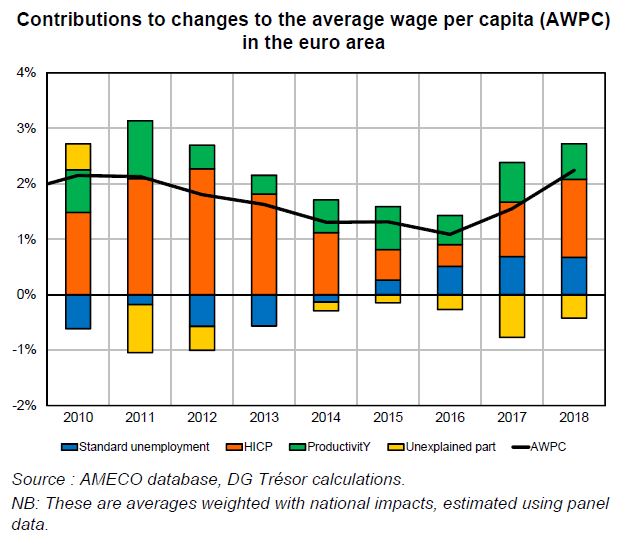Unemployment and wages in the United States and in the euro area
The relationship between the evolution of unemployment and wages was disrupted after the 2008 crisis. Despite a decrease in unemployment following the crisis, wages in 2018 were still less dynamic than in the pre-crisis period in the euro zone and the United States. This weakening of the link between wages and unemployment was mainly the result of the development of new forms of employment and wage moderation policies in some countries.
Although unemployment dipped following the 2008 crisis, wage momentum in 2018 was still slacker in the euro area and the United States than during the pre-crisis period. A number of factors (less trade union influence, effects of workforce composition) have been put forward to explain this weakening of the relationship between unemployment and wages (Phillips curve). It may be that the traditional unemployment measurement method no longer adequately reflects labour market tensions since the emergence of atypical types of employment.
In addition to standard unemployment, a broader measure of unemployment (hereinafter "broader unemployment"), which encompasses underemployed and discouraged workers, as well as surveys of hiring difficulties, could also provide insight into wage momentum in the post-crisis period.
Prior to the financial crisis in the euro area's "Northern" countries (Germany, the Netherlands, Belgium, Austria, Finland and Luxembourg) there was less wage momentum than may have been suggested by the determinants. It has become more aligned over the past three years but has still not increased enough to offset the previous wage restraint.
In the "South" of the euro area (Spain, Italy, Portugal, Greece, Cyprus and Malta), the sharp rise in unemployment during the crisis (2012-2013) put a significant drag on wages. Support for wages brought about by the recent decline in unemployment is being undermined by wage restraint policies introduced in recent years which are reflected in weak unit labour cost growth.
The core inflation gap between the euro area and the United States after the end of the crisis reflects unit labour cost momentum on both sides of the Atlantic.
